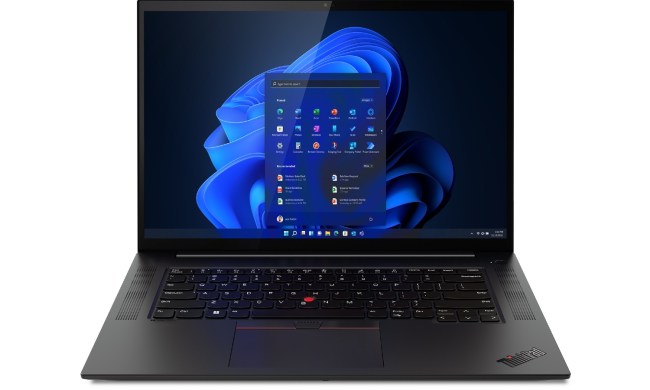Are you looking for innovative, experimental tech that’s pushing the industry forward? Well, look no further than laptops with foldable screens.
We now have two out in the wild: the Asus Zenbook Fold 17 and the ThinkPad X1 Fold Gen 2. The two devices share a lot in common, even beyond the fact that they both have a screen that can fold in half. But which is the best representation of what this form factor can be?

Specs
| Lenovo ThinkPad X1 Fold Gen 2 | Asus Zenbook Fold 17 | |
| Dimensions | 6.9 x 10.87 x 0.68 inches | 14.90 x 11.32 x 0.51 inches |
| Weight | 4.19 pounds (including keyboard) | 3.31 pounds (including keyboard) |
| Processor | Up to Intel vPro with 12th-generation Intel Core U9 i5 and i7 Processors | Intel Core i7-1250U |
| Graphics | Intel Iris Xe | Intel Iris Xe |
| RAM | Up to 32GB LPDDR5 | 16GB LPDDR5 |
| Display | 16.3-inch (2024 x 2560) OLED, 600 nit HDR/400 nit SDR | 17.3-inch, 2560 x 1920 OLED, 500 nit HDR |
| Storage | Up to 1TB PCIe 4 SSD | 1TB M.2 PCIe 4.0 SSD |
| Touch | On-cell Touch with Pen support | Yes |
| Ports | 2x Thunderbolt 4, 1 USB-C 3.2 Gen 2, Nano-SIM card tray, 3.5mm combo audio jack | 2x Thunderbolt 4 3.5mm combo audio jack |
| Wireless | Wi-Fi 6E 802.11 AX (2×2), Bluetooth 5.2, 5G Sub 6 (optional) | Wi-Fi 6E and Bluetooth 5 |
| Webcam | 5MP RGB+IR, with Intel VSC option | 5MP with IR |
| Operating system | Up to Windows 11 Pro | Up to Windows 11 Pro |
| Battery | 48 watt-hour (optional additional 16-watt-hour configurable) | 75-watt-hour |
| Price | $2,500 | $3,500 |
Two forks in the road
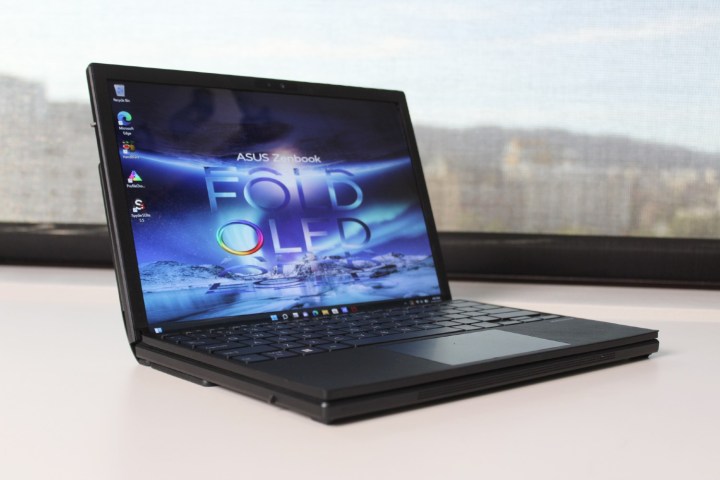
The Zenbook Fold 17 and ThinkPad X1 Fold Gen 2 both build upon the design of the original ThinkPad X1 Fold. They both have larger foldable displays, a wireless keyboard, a kickstand, and multiple modes for using it.
But the two devices take different paths in terms of the form factor and design. The Zenbook Fold 17 actually shares more in common with the original ThinkPad X1 Fold, using a similar faux-leather “binding” to cover the hinge. The X1 Fold Gen 2 has an entirely new look, with woven fabric on the outside and a more streamlined look. We prefer the X1 Fold Gen 2, which doesn’t try as much to resemble a folded-up notebook.
Also, the ThinkPad X1 Fold Gen 2 has a completely removable kickstand this time around rather than building it right into the device itself. This also allows it to lay completely flat on the table, which is impressive. The Zenbook Fold 17 still can’t quite do this.
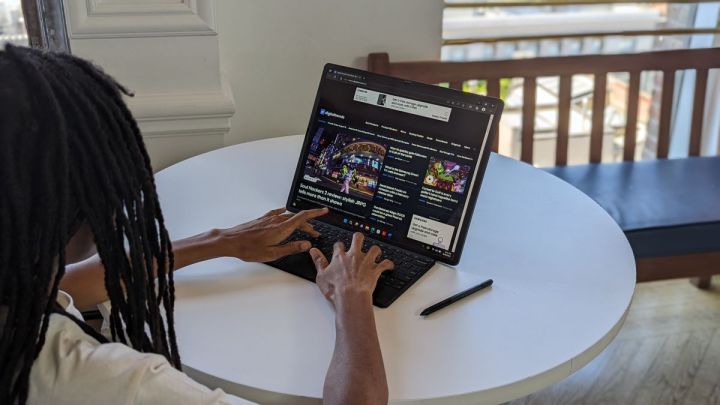
Both the Zenbook Fold 17 and ThinkPad X1 Fold Gen 2 can be used as tablets, albeit very large ones. They can also both be used in desktop mode, where the screen is held up by the kickstand and the keyboard is removed. You may prefer to use the devices like this, as it allows you to take full advantage of the larger, unfolded screen.
Both devices also support a laptop mode, where the keyboard magnetically attaches to the bottom half of the folded screen. The Zenbook Fold 17 has a slightly larger screen, though, which comes in handy in both modes. One of the issues with the original ThinkPad X1 Fold was the small screen, which made this laptop mode feel pretty unusable. But now, both the Zenbook Fold 17 and the ThinkPad X1 Fold Gen 2 feel like capable laptop replacements, regardless of which mode you’re in.
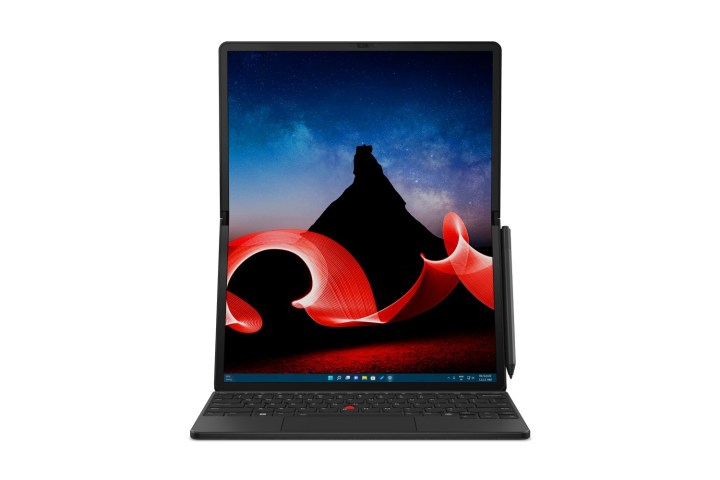
The ThinkPad X1 Fold Gen 2 benefits from an additional portrait mode, largely thanks to the odd aspect ratio of the device. Portrait mode might look strange with the keyboard connected to it, but it gives you a vertical view of your content that could be handy for those wanting to stack multiple screens, or just to get a taller view of your spreadsheets, websites, or word documents. It’s not the most practical thing in the world, but it is a neat addition to what this device can already do.
Of course, the detachable keyboard comes bundled in with the device in both cases. And fortunately, they’re both quite good. We’ll need to spend more time with the ThinkPad X1 Fold Gen 2 to get a final verdict on usability, but both keyboards feature full-size layouts that most people will be comfortable with.
The Zenbook Fold 17 did suffer from some issues with the touchpad, though, which is something we’ll be looking to test more on the X1 Fold Gen 2 when we get it out for review.
Display
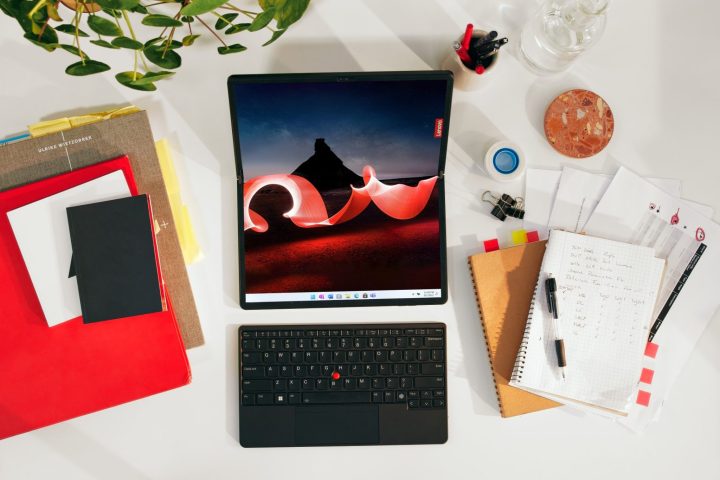
The size is the most obvious difference in displays between these two devices. The Zenbook Fold 17 is a full inch larger diagonally, and Asus managed to do that without adding too much extra weight to the overall package. That makes the benefits of having a foldable device even more noticeable, allowing for an excellent screen to work on when out and about. That extra screen real estate really does feel wonderful to use.
We haven’t tested the screen of the ThinkPad X1 Fold Gen 2 in detail yet, but I’d expect the two screens to perform quite similarly. They’re both using a version of LG’s FOLED (foldable OLED) panels, which bring excellent contrast and color to these devices.
The screens themselves both have a protective layer that makes the display look cheap. They’re highly reflective and have a different texture to them than what you’re typically used to, which was something we noticed particularly on the Zenbook Fold 17, especially in comparison to foldable smartphones. Impressively, though, the ThinkPad X1 Fold Gen 2 does a better job of hiding the crease down the middle of the screen, whereas it can still be seen on the Zenbook Fold 17.
Performance
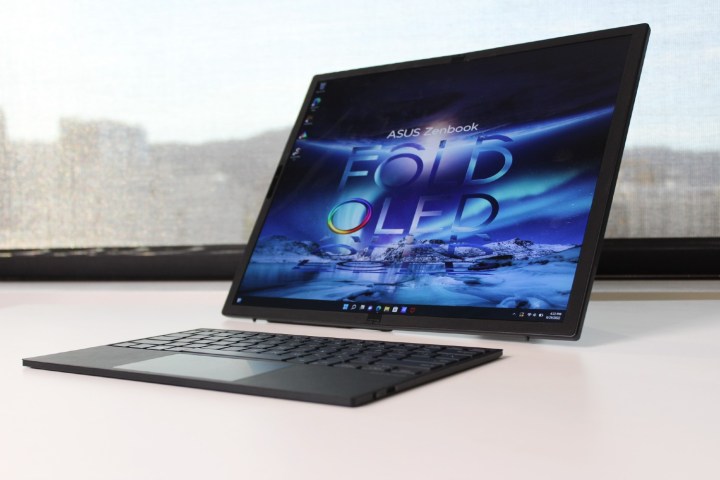
You’re going to see very similar performance from both of these devices. They both use a low-wattage 12th-gen Intel processor, up to a Core i7. In both cases, they should represent a significant step up from the original ThinkPad X1 Fold, which suffered from using a low-powered Intel Lakefield chip.
These two new foldables are capable laptop replacements, even if they’re on the slower end of the spectrum. Interestingly, the ThinkPad X1 Fold Gen 2 is fanless, which means it’s completely silent. The Zenbook Fold 17, on the other hand, has an active cooling system with fans that spin up. How will this impact performance comparisons? We’ll have to wait and see until we can test the X1 Fold Gen 2 out more.
The other main difference is that the ThinkPad X1 Fold Gen 2 comes in a vPro model, which comes with specific business-centric features and security enhancements.
The X1 Fold Gen 2 also has more configuration options, letting you opt for up to 32GB of RAM down to lower storage options. The Zenbook Fold 17, on the other hand, only offers a 16GB model with 1TB of storage.
We haven’t tested the ThinkPad X1 Fold Gen 2 in full yet, but the Zenbook Fold 17 has a larger 75-watt-hour battery. The result was OK battery life, but certainly nothing to write home about. The ThinkPad X1 Fold Gen 2 has a smaller 64-watt-hour battery, with an even smaller 48-watt-hour battery in the base configuration.
Foldables are heating up
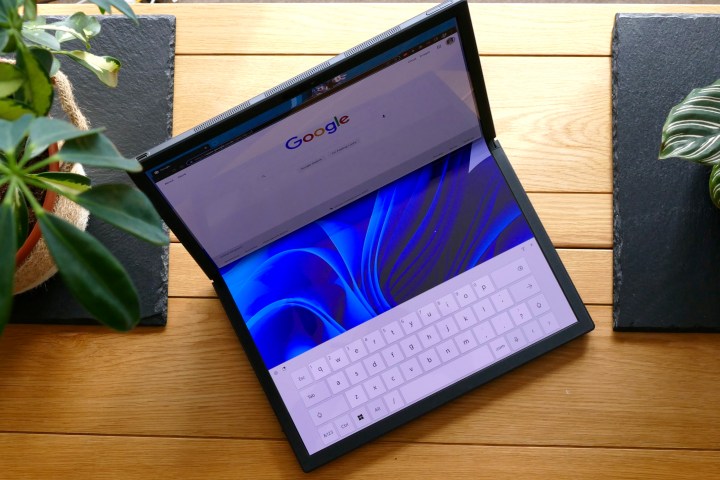
The Zenbook Fold 17 is a great step up from the original ThinkPad X1 Fold, most notably due to the extra size, improved keyboard, and significantly better performance.
The ThinkPad X1 Fold Gen 2, however, feels more like a true second generation of this product design. We’ll wait until we spend some more time with it to make a final verdict, but it seems to use some improved display technology that irons out some of the wrinkles that still made it into the Zenbook Fold 17.
It also comes in many more configurations, allowing for a cheaper starting price of $2,500. That makes it feel like a more accessible product for those who want to give these foldable laptops a try.
Neither laptop is available for purchase at this exact moment, but both should be available in the coming months.


